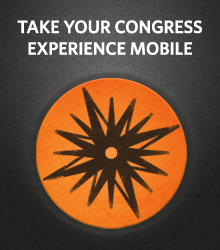The epic narrative of pandemics
Trevor Pritchard, Freelancer
As a journalist, I like to think I do a passable job of recognizing my potential biases and sidestepping them whenever I can.
But Tess Laidlaw’s exploration of media coverage of the 2009 H1N1 pandemic makes me wonder. What if I’m biased not because of political or religious or cultural beliefs, but because I’m a storyteller?
Laidlaw, a doctoral candidate in interdisciplinary studies at the University of Saskatchewan, is presenting her research on how ideas of the “epic” infiltrated the work of reporters covering the first week after people started dying in Mexico.
Choosing articles at random from national and regional newspapers, Laidlaw classified coverage of the crisis into three groups. One group of reporters diligently quoted public health officials as “reassuring influences” without using the word “pandemic.” Another group acknowledged the threat as a potential pandemic, but also depicted health officials as able to handle the situation.
The third group, however, really interested Laidlaw. They were the reporters who didn’t offer ways for people to protect themselves - they instead depicted a “basically apocalyptic” scenario with the H1N1 virus embodying the villain of epic tales.
“It’s interesting how they talked about the virus - they talked about it almost as if it has its own potency, they anthropomorphized it,” she says. “This villain has the entire world in its sights . . . and nothing’s standing in its way.”
As well, Laidlaw noticed pandemic alert levels holding almost a mythical, talisman-like sway in the coverage. It didn’t matter how many people were dying - if the World Health Organization said there was no pandemic, there was no pandemic.
Laidlaw - who based her understanding of epic partly on the work of Mikhail Bakhtin - says her research has practical applications for journalism schools. It also can be of use for health officials, because once news consumers come to expect an epic narrative in the case of a pandemic, anything that doesn’t fit - like urgings to wash hands or take other basic precautions - gets filtered out.
She presented her paper, “The ‘epic’ perspective in media coverage of a pandemic: A dramatistic analysis” on May 28 at 2 p.m.
Photo courtesy of treintagenario from Flickr













